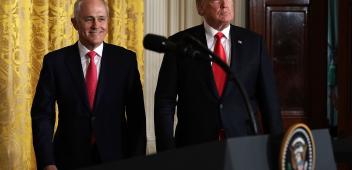Bond maturity mismatch shows why near zero rates a serious error
In time, we may come to wonder why the chief architect of the policy that has created the painful imbalances in bank balance sheets – Ben Bernanke – won the Nobel Prize. Originally published in the Australian Financial Review.

The demise of Silicon Valley Bank has triggered concerns about American banks. In many ways SVB was idiosyncratic, with its narrow customer base and largely uninsured deposits. But it illustrates a wider problem: the decade of low interest rates created serious imbalances in financial balance sheets, made painfully apparent by the response of monetary policy to rapid inflation. As global interest rates move up, maturity risk is coming home to roost.
Around half of SVB’s assets were government bonds – surely the safest of assets. However, as bond-yields rose from the abnormally low rates of a few years ago to a more normal level, the current value of bonds fell sharply. Yes, a bond is assured of paying face value at maturity. But in the meantime, investors could benefit from the new higher interest rate by buying a new bond. The market price of the old bond had to fall to reflect this reality.
If banks intend to hold bonds until maturity, they are not required to mark-to-market – i.e. to reflect this lower value in their balance sheet. But the loss is just as real. Their cost of funding goes up, and their interest income is unchanged. The pain is drawn out, but not diminished by holding to maturity.
How many other banks have this same maturity mismatch, holding low fixed-rate assets (loans or bonds), a legacy of the period when interest rates seemed to be low forever?
The FDIC (which insures bank deposits) calculates that the mark-to-market loss on all banks’ bond-holdings was $US620 billion ($932.4 billion) at the end of 2022. But bonds are not the only bank asset with fixed interest rates.
A group of academics has estimated the loss on overall assets to be around $US2 trillion – enough to wipe out banks’ equity. Reassuringly, they argue that banks with ‘sticky’ deposits can go on paying depositors a below-market interest rate, so their interest margin might not be squeezed too much. But this is in aggregate.
The Core Problem
Among America’s 4000-plus banks, there will be those which share SVB’s weaknesses and don’t have the luxury of sticky deposits, especially in the current febrile environment.
This will leave the US Federal Reserve and the FDIC with the same quandary they faced with SVB: the individual bank in trouble may not be systemic, but if it is typical of a number of other banks, then contagion can occur.
Do they save all the depositors, including those larger than $US250,000, as was done with SVB? The Fed’s additional response – offering to lend against government securities without a haircut – only postpones the problem.
The core problem is maturity mismatch. Particularly in America, where mortgage borrowers routinely borrow long-term at fixed rates, while banks are borrowing shorter-term. Unlike in Australia, American mortgage borrowers get the heads-I-win-tails-you-lose advantage of being able to refinance their mortgage when rates fall. The banks lose from this quirk. The preponderance of small regional banks increases vulnerabilities.
This is not the first time that a sharp rise in the policy interest rate has caused strains in the financial system.
The 1979 Volcker shock (with rates rising to almost 20 per cent) tamed inflation, but ushered in a record number of bank failures post-depression and set the scene for the savings and loans crisis, which wiped out the industry, with taxpayer losses of $125 billion. Overseas, the sudden rise in US-dollar borrowing costs triggered the Latin American debt crisis, retarding growth for a decade in the borrowing countries.
The current tension is not unique to America. Nor is it confined to banks. Hefty interest rate rises in the UK caught-out pension funds which had hedged their long-term pension liabilities by buying long bonds When rising interest rates caused bond prices to fall dramatically, the bonds still hedged the funds’ pension liabilities, but the lower current value of the bonds no longer provided adequate security for the funds’ borrowings.
When the magic stops
None of these crises was solely caused by maturity mismatch: there were always other issues as well. But the general lesson is clear. Borrowing short and lending long – i.e. maturity transformation – is a core function of the financial sector, but always involves risk.
When interest rates are stable or falling, maturity transformation looks like magic: lenders hold a liquid asset, which provides funding for illiquid assets. But when interest rates rise sharply, the magic stops. Either the lender, the borrower or the intermediary pays the price.
In America, it is the banking system – and the financial system more broadly. In the UK, it is the pension funds. In Australia, it is the borrower with floating-rate debt, with the Australian banking system insulated from the mismatch.
The huge increase in fixed-rate government debt since the global financial crisis has set the stage for more pain. Central banks are just coming to terms with the losses on their quantitative easing bond purchases. The bulk of the bonds are held elsewhere, with the pain becoming apparent only gradually.
In time, the Fed’s post-GFC persistently near-zero policy settings may look like a serious error. Rates were expected to stay low forever. Some may come to wonder why the chief architect of this policy – Ben Bernanke – won the Nobel Prize.



